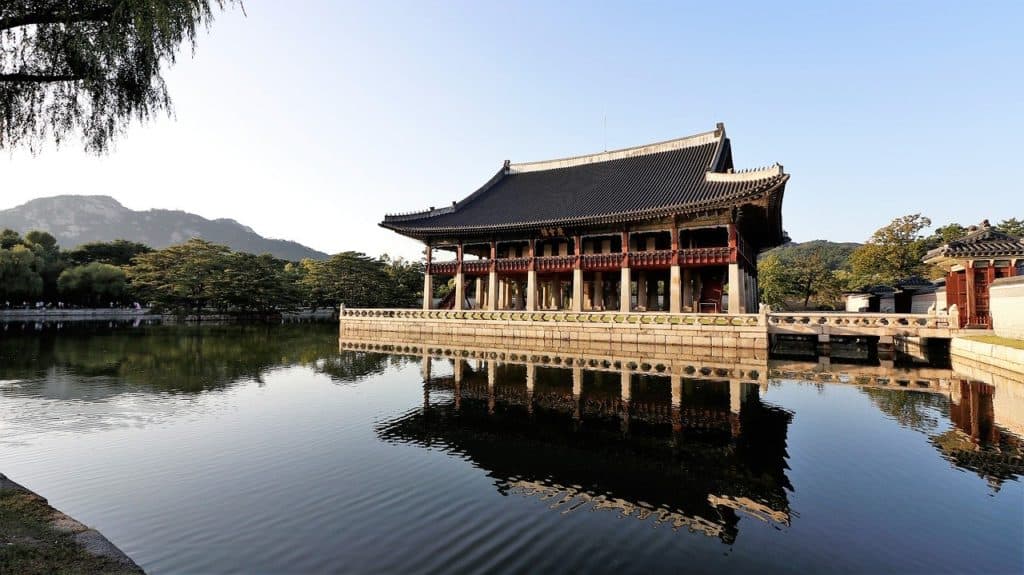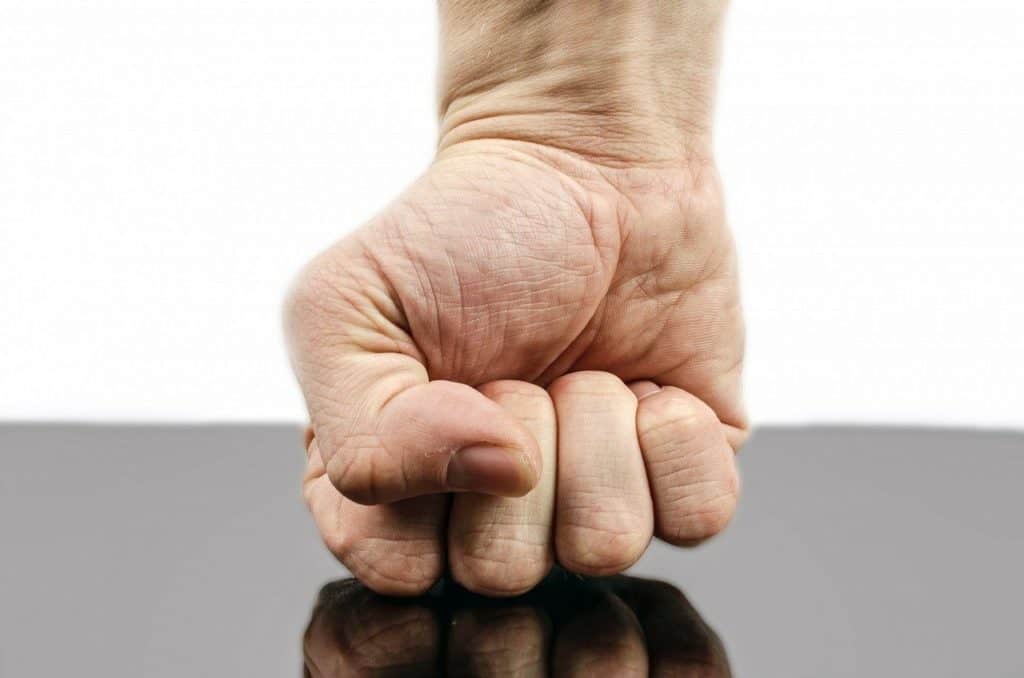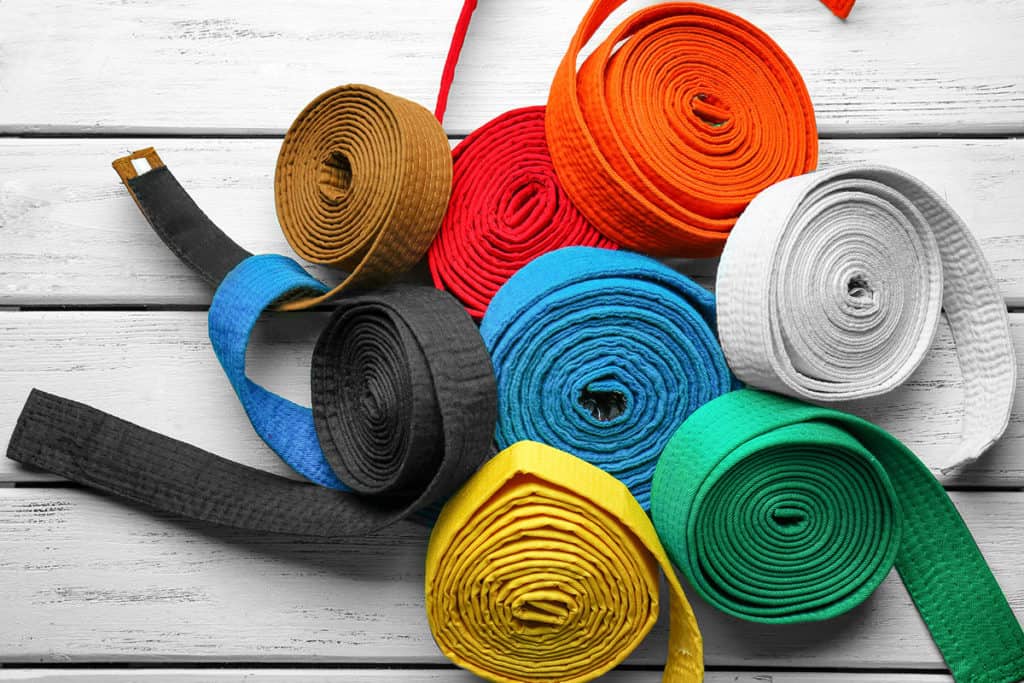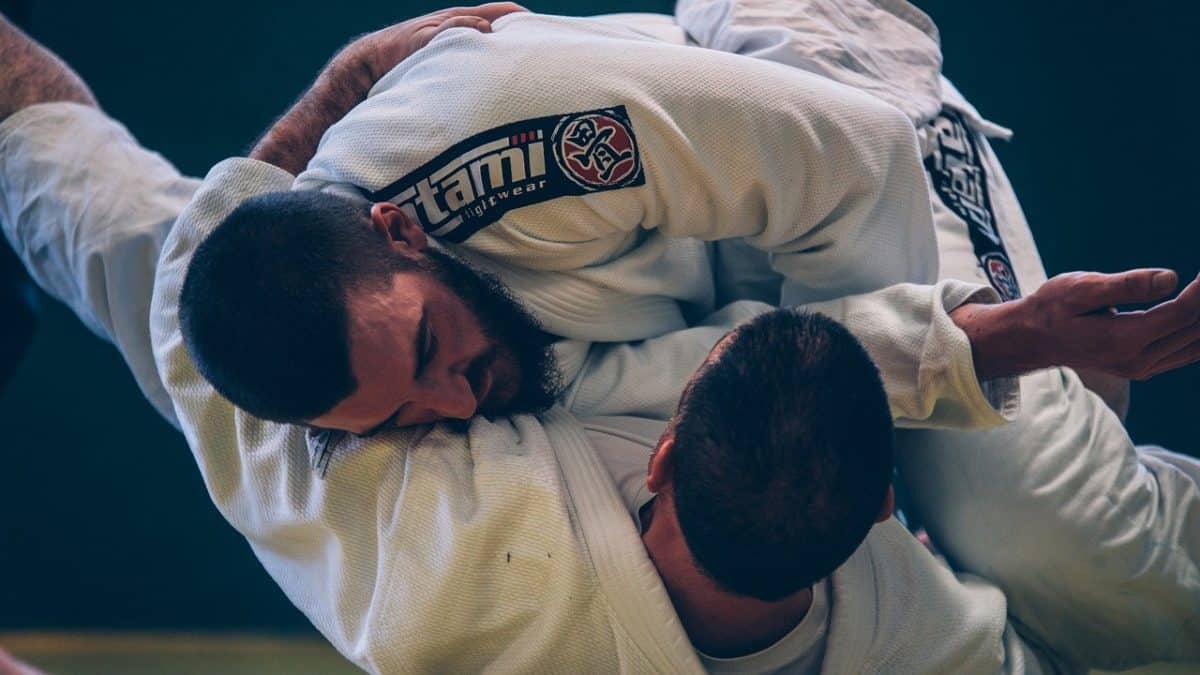
TaeKwonDo is different from Jiu-Jitsu as it originated in Korea and is more centered on kicking techniques whereas Jiu-Jitsu is from Japan and is considered more of a grappling martial art. With Taekwondo, there are more forms to learn than Jiu-Jitsu. Neither TaeKwonDo or Jiu-Jitsu use weapons.
Choosing between Taekwondo and Jiu Jitsu to study is a big deal, and starting the process of choosing the one that is right for you is a difficult one. It all depends on what you are looking for, and there is not set rules because everyone is different.
All Martial Arts styles including Taekwondo and Jiu Jitsu are great, but it really depends on your individual needs. If you are deciding which martial art, Taekwondo or Jiu Jistsu is better for you, then read on and and let’s see look at the differences between these two martial arts.
Taekwondo Vs. Jiu-Jitsu
If you had to compare two martial arts, you could not find two that were more different than each other. One is a martial art , Taekwondo, based in striking and the other, Jiu Jitsu, is based on grappling.
Each individual and family have their own needs and preferences, so here I will go into detail about the differences of each. Continue reading below to learn about the principles of these martial arts and how they match up with one another.
Origins of Jiu-Jitsu
It has been argued that the origins of Jiu Jitsu goes back to ancient monks of India, but the modern forms as we know it comes from Japan. Jiu-Jitsu’s original name was “Ju-Jitsu” and it started in the Sengoku period of Japan around the beginning of the 15th century.
Japanese Jiu-Jitsu
Early Japanese Jiu-Jitsu was the battlefield art of the samurai. Samurai practiced self defense techniques for when they found themselves unarmed in combat and needed to defend themselves. Because their armor limited their movement, they needed to rely on close combat relying on joint locks, throws, and strangles along with other striking martial arts they trained.(Generally some form of karate.)
Judo
By the mid 1800s Jiu Jitsu had broken off into several styles or ryus and Judo being the most popular. Judo was created by a highly proficient Jiu Jitsu practitioner named Jigoro Kano and its principles were maximum efficiency with little effort. It became the most popular and widely practiced martial art and the world with Kano’s branching off to create other martial arts like Sambo and Brazilian Jiu Jitsu.
Brazilian Jiu-Jitsu
When you say Jiu Jitsu today, BJJ is what people think of when you say the name and it is what we’ll compare to TaeKwondo. Kano’s student Mitsuo Maeda emigrated to Brazil and taught the sons of local Brazilian politician George Gracie in return for helping him emigrate to the country. The sons developed their own martial art from Maeda’s teachings and it evolved into the martial art practiced by millions of people today.
Origins of TaeKwondo

TaeKwondo, the national martial art of Korea formed in the 1940s, but the techniques date back centuries. Ancient kingdoms of Korea used self defense systems that used techniques that are similar to what you see in modern day TaeKwondo. Unfortunately due to the turbulent history of Korea being constantly occupied by foreign nations it took longer for TaeKwondo to form.
It was until the end of WW2 that Korea regained its independence from Japan and was able to regain their identity. Thanks to a demonstration of the martial art to the South Korean president in 1952 by TaeKwondo pioneers Choi Hong-hi and Nam Tae-hi, the martial art was able to grow.
President Syngman Rhee immediately made this the martial art of the South Korean army. Years later after failed attempts to make a unified organization, the World TaeKwondo Federation was formed in 1973, a year after the establishment of the national TaeKwondo Academy the Kukkiwon. After an official governing body was established this led to an explosion of popularity and as of today TaeKwondo is one of the most practiced martial arts in the world.
The Philosophy of Jiu-Jitsu vs Taekwondo
Jiu-Jitsu
For Jiu Jitsu practitioners, the martial art is a way of life that connects people around the world. Here is what the philosophy of Jiu Jitsu teaches.
- Community: It doesn’t matter where you’re from, what you do, or if you even speak the same language. Jiu Jitsu is about community and it gives a person a support system that goes beyond the martial art.
- Humility: In the beginning of training Jiu Jitsu, you feel helpless, but as you keep training you understand the martial art better. This journey teaches students to be humble and respect the abilities of others.
- Empathy: Jiu Jitsu teaches students how to be empathetic towards themselves and their training partners. No matter what you or your training partners are feeling, you want to help them feel better and get better at Jiu Jitsu together.
- Selflessness: This is another thing that Jiu Jitsu teaches you about life. Always put others before yourself and look to help people that need it.
TaeKwondo
Like in Jiu Jitsu and many other martial arts, TaeKwondo also teaches lessons that go beyond the art. We listed the philosophy of TaeKwondo before, but we’ll list the five tenets again to compare with the philosophy of Jiu Jitsu.
- Ye-ui(Courtesy): Show courtesy and respect to everyone and conduct yourself in a respectful way in/outside of the dojang.
- Yeom-chi(Integrity): Learn what is right and wrong and to have the integrity stand up for what you know is right.
- In-nae(Perseverance): Persevere and strive to reach your goal until you achieve it.
- Geuk-gi(Self-Control): Have control over your physical and mental actions.
- Baek-jeol-bul-gul(Indomitable Spirit ): Have the courage to stand up for what you believe in no matter the odds.
The Difference in Techniques between Jiu-Jitsu vs Taekwondo
Jiu-Jitsu
Jiu Jitsu could not be more different than TaeKwondo. It is a grappling martial art that relies on a variety of submissions and takedowns to subdue an opponent with minimal effort. Here is a list of some of the main techniques of Jiu Jitsu.
- Joint Locks: A variety of joint locks are taught from arm-bars, kimura, americana(keylock), shoulder locks, and foot locks.
- Strangulations: Choke holds such as a rear naked choke(RNC), guillotine choke, triangle choke, arm triangle, and lapel chokes if you’re wearing a gi(kimono).
- Takedowns/Throws: Jiu Jitsu teaches a lot of techniques that are also taught in judo and wrestling. To get an opponent to the ground a variation of takedowns and throws are taught to students.
(Jiu Jitsu schools teach striking, but it is generally taught in another type of class like Muay Thai or MMA.)
TaeKwondo

Techniques of TaeKwondo could not be more different that Jiu Jitsu’s techniques. A variety of kicks and punches from standing are the predominant focus of the martial art.
- Sidekicks/Front Kicks: Sidekicks are thrown with your foot horizontal and front kicks are thrown when the foot vertical. They are used to keep range and strike an opponent from a distance.
- Punches: Punches are used to generally set up kicks, strikes like ridge hand are used often.
- Roundhouses: Snapping kicks with foot/lower shin to the side of an opponent’s face or body.
- Spinning/Jumping kicks: Spinning or jumping kicks are the most powerful kicks in TaeKwondo. The act of spinning or jumping accelerates power to deliver a devastating attack.
The Difference in the Forms of Jiu-Jitsu vs Taekwondo
Each Jiu Jitsu school depending on their affiliation has their own style, but it is essentially all Jiu Jitsu. There are really only three types of Jiu Jitsu.
- Gi Jiu-Jitsu: This is when you practice Jiu-Jitsu in a gi or kimono. You use techniques that involve using the opponent’s gi against them much like in Judo.
- No Gi Jiu-Jitsu: This is Jiu-Jitsu without the kimono. It is a much faster and athletic style of Jiu-Jitsu since there is no gi involved and you’re not allowed to grab your opponent’s clothes.
- MMA Jiu-Jitsu: This is what you in the UFC. It is is Jiu Jitsu with striking involved, so you must defend strikes, while training to work for a submission.
TaeKwondo
In TaeKwondo, there are five prominent organizations that teach 24-30 forms to their students. All generally teach the same striking techniques.
- Kukkiwon
- Jhoon Rhee Forms
- American TaeKwondo Association
- Global TaeKwondo Federation
- International TaeKwondo Federation
What Weapons are Used in Jiu-Jitsu and TaeKwondo
These martial arts are forms of unarmed combat. They generally teach students how to subdue attackers without getting hurt. In addition the history of these traditional martial arts were both started by teaching self defense without the need of weapons and is still practiced like that today.
However there are schools of Taekwondo like the ATA, that have started adding the teaching of weapons.
What are the Belt Ranking in Jiu-Jitsu vs TaeKwonDo

Both martial arts go by a colored belt system to signify rank in their respective martial arts. Both go from white to black with intermediate colors in between the journey to black belt. In Jiu Jitsu, there are different belts for kids and when they reach 15 or 16, they can graduate to the adult belts.
Is Taekwondo or Jiu Jitsu More Effective in a Real Life Situation?
In a real life situation, Jiu Jitsu has the edge over TaeKwondo. The reason being that in real life situations grappling is involved and Jiu Jitsu teaches you how to control someone in this situation with little risk of getting hurt.
TaeKwondo is great for defending yourself, when standing, but once it gets to the ground, you’re going to need to know some kind of grappling to protect yourself from getting hurt.
Try Both Before Committing
TaeKwondo and Jiu-Jitsu are both respectable martial arts that teach you self defense, while building character. They teach students how to be better people and also help others that are in need.
Because its such a big investment in time and money. I would suggest trying out each one for a month to see which one you like best. Most schools will give you the first lesson for free, but in my opinion that is not enough to evaluate which one you will like better.
Ask if you try the school for a month before making any long term investment. Once the month is up, I think it will be a clear decision for you on which one you prefer.


